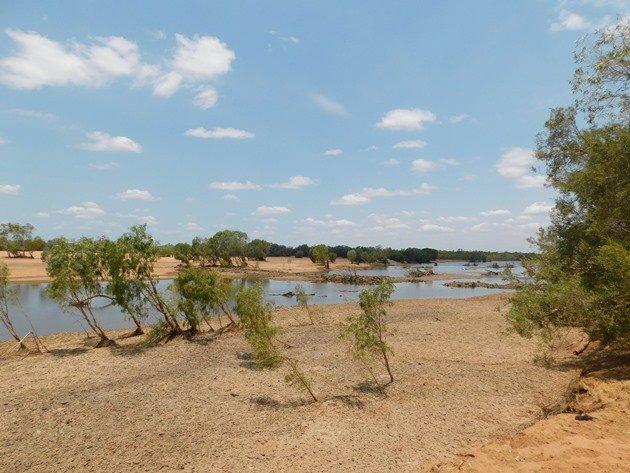
We have not seen rain in Broome for about six months now, but there has been rain inland and on October 30th we decided to risk a camping trip to Langi Crossing. We had last camped there in May and the water level had been high then after the wet season. The level had dropped significantly in a couple of weeks then and the water level is really low now. The header photo is from when we arrived on the Saturday and positioned ourselves in the shade due to the heat being rather intense at around 40c, but also very dry.
We sat watching the birdlife and the weather and both changed considerably over the next few hours. We had been keeping an eye on the weather in that area over the previous few days. There had been rain around, but not significant in that area. It was still a dusty trip into the banks of the Fitzroy River. It didn’t take long for the sky to change and we chose not to risk setting the tent up until the storm had passed and the ground had cooled off. Setting your tent up on hot ground means you will trap the heat and we didn’t need to do that!
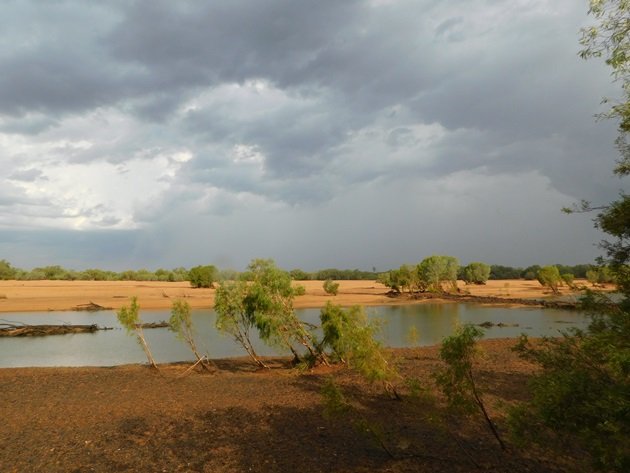
Stormy skies
The sky did suddenly open and it poured for a few minutes around 3pm. We were parked on a rocky area and knew that the water would soon soak in and we would still be able to leave the next day. We had a lot of rumbling after the rain and the storm moved towards Willare offering us a spectacular lightning show. Thankfully you can get phone reception at Langi Crossing, so you can make a sensible decision on whether to stay or go. We knew that there was a good chance that we would not be able to return again this year once the rain really kicks off.
The birds around the spot that we camp were very active and typically noisy. Little Friarbirds, Red-collared Lorikeets, Grey-crowned Babblers, Magpie-larks, Paperback Flycatchers, Torresian Crows, Willie Wagtails, Black-faced Cuckoo-shrikes, Purple-backed Fairywrens, Rufous Whistlers, Grey Shrike-thrush, Great Bowerbirds, Red-browed Pardalotes, Varied Sittellas, Yellow White-eyes, Pied Butcherbirds and Rainbow Bee-eaters were very active right near where we were sat. Little Corellas, Sulphur-crested Cockatoos were on the other side of the river and Red-tailed Black Cockatoos were active just after the rain hit.
In the river there were several Australasian Darters and they appeared to be fishing well with the lower water level. They were also keen to find some shade after feeding!
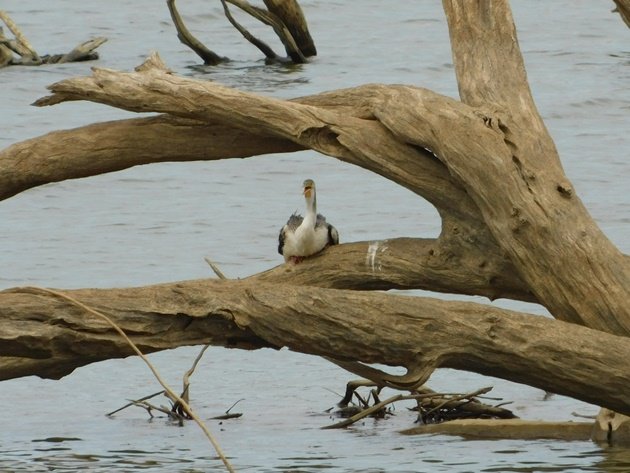
Australasian Darter
Australian White Ibis, Glossy Ibis and Straw-necked Ibis were feeding at the river. Great Egret, White-faced Heron, Little Egret, Black-fronted Dotterel, Black-winged Stilt, Masked Lapwings, Australian Pelican, Common Greenshank, Common Sandpiper, Wood Sandpiper, Grey Teal and a Nankeen Night-heron on dusk after the rain.
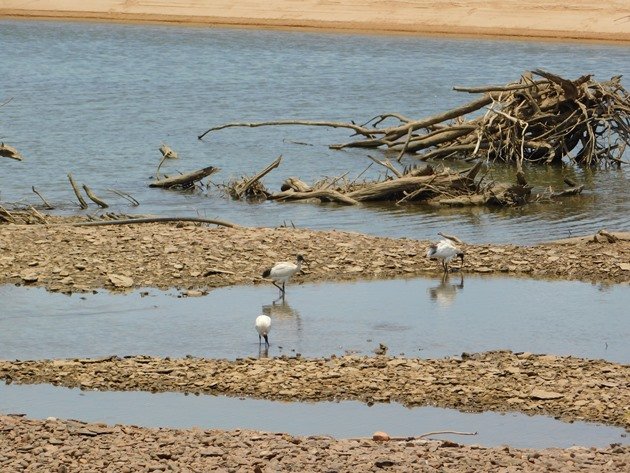
Australian White Ibis
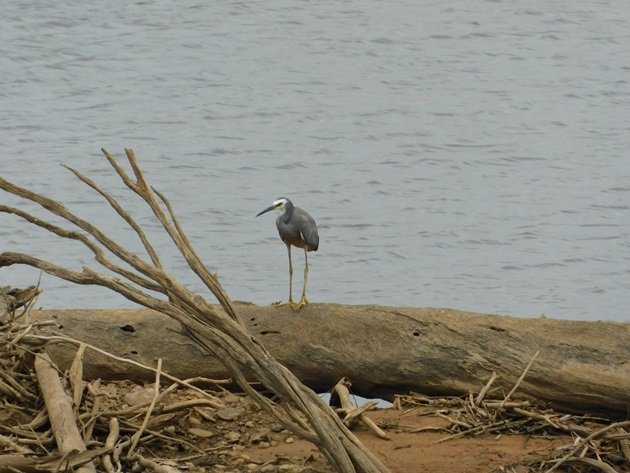
White-faced Heron
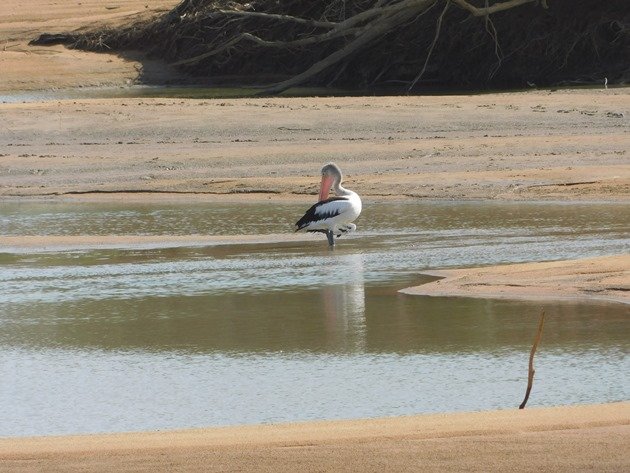
Australian Pelican
We watched the Brolga come to the river and walk along the far bank. There was also a juvenile Black-necked Stork and we have observed them nesting here in the past.
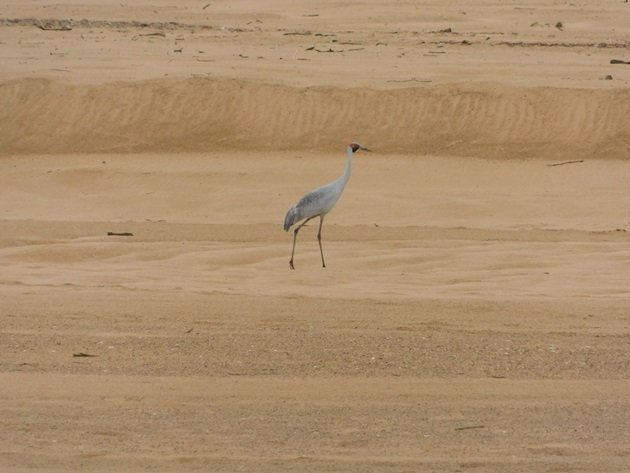
Brolga
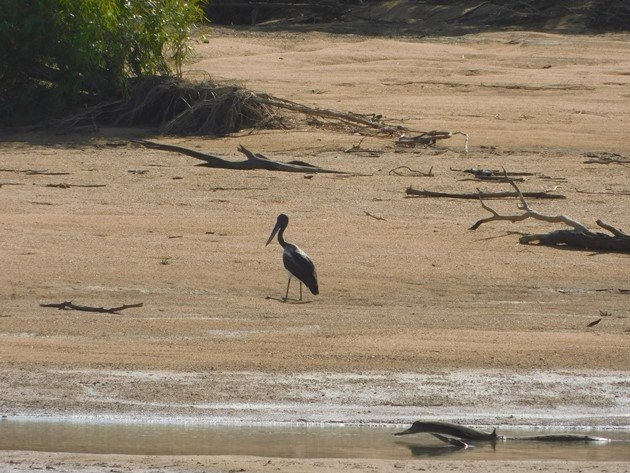
Kneeling juvenile Black-necked Stork
There were numerous terns travelling up and down the river feeding and they included Whiskered Terns, Gull-billed Terns and Caspian Terns. Tree Martins flitted back and forth across the river as well. There was a White-bellied Sea-Eagle perched on the banks of the river. There were both White-breasted Woodswallows and Black-faced Woodswallows around our camp area. After the rain the Black-faced Woodswallows all huddled together in a tree on dusk.
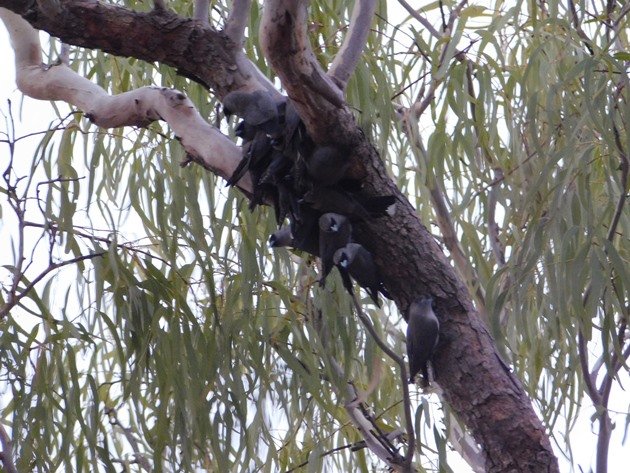
Black-faced Woodswallows huddled together on dusk
Crested Pigeons, Bar-shouldered Doves, Diamond Doves, Peaceful Doves, Long-tailed Finch, Double-barred Finch and Cockatiels all came to drink at the river and the subsequent puddles after the short sharp rain event. We went to sleep to the sound of Bush-stone-curlews wailing, Western Boobook and Tawny Frogmouths and the lightning show upstream. Blue-winged Kookaburras had to have the last laugh before we fell asleep!
It was a beautifully cool night after the rain and we woke to blue skies once again. It’s that time of year when the sky changes frequently and fast and we get a break from the constant blue without a cloud in sight. Pheasant Coucals were calling after the rain and the flowering trees were offering up food to many honeyeaters. Rufous-throated Honeyeaters were the predominant species, but there were also Brown Honeyeaters, Yellow-tinted Honeyeaters and Black-chinned Honeyeaters. The White-winged Trillers were being vocal in the area and singing from the tops of the trees.
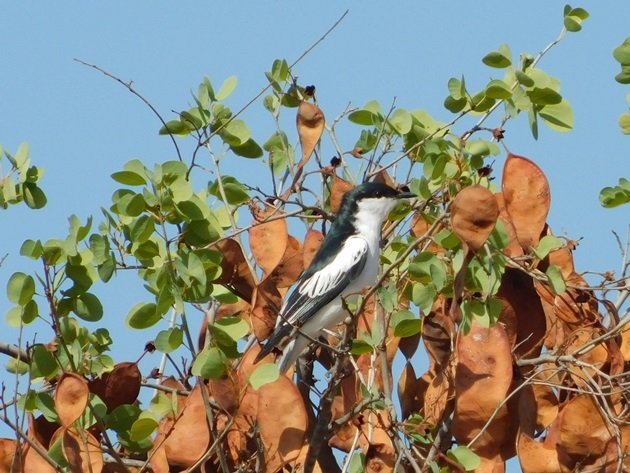
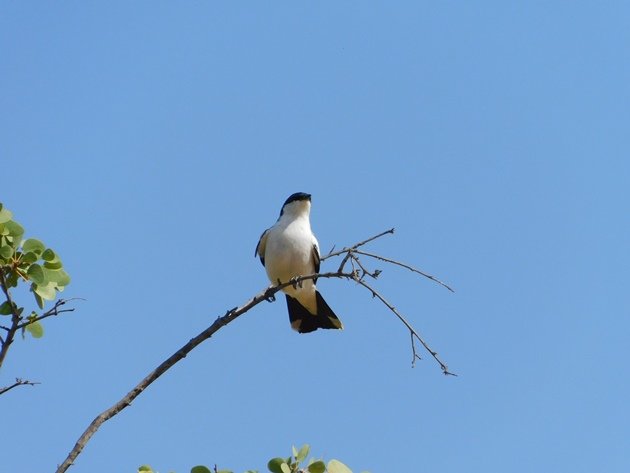
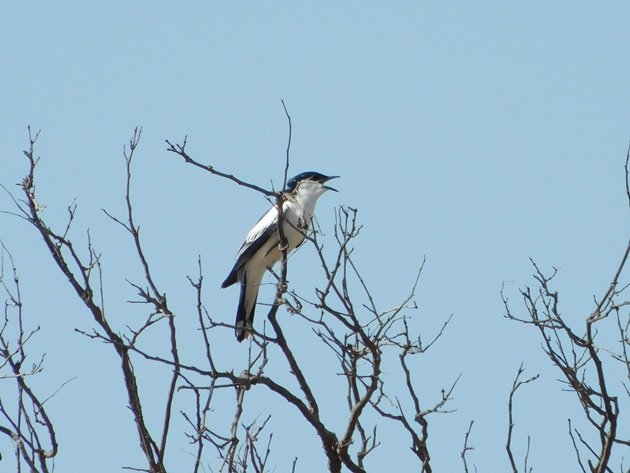
White-winged Triller
We had a morning walk to observe a few more birds before we left and the evidence from the rain was some rather sticky mud, but it soon dried out.
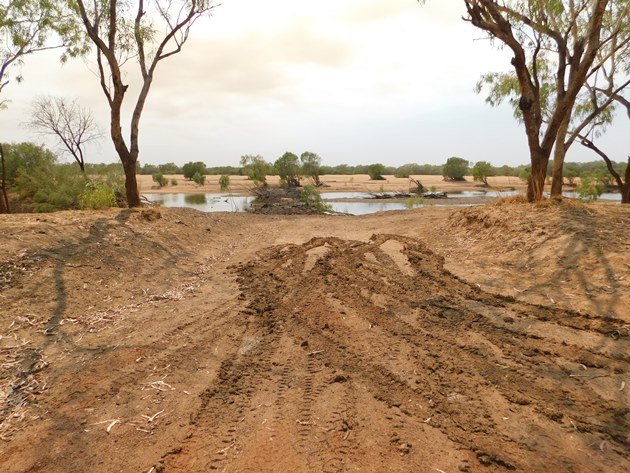
Sticky track
We walked the tracks observing the birdlife and the recent growth in vegetation. The boab trees have started to flower now and the Galahs were roosting in them.
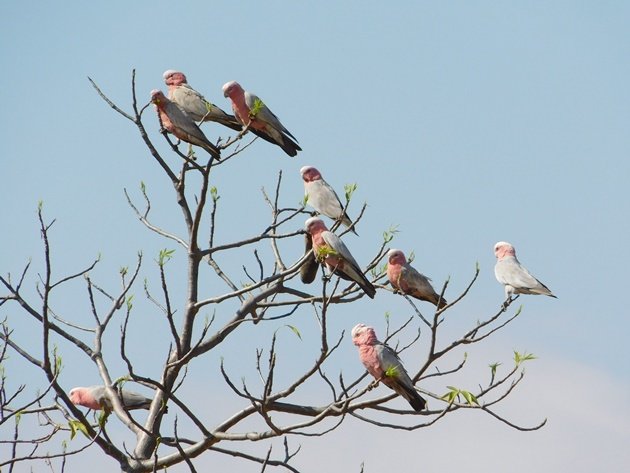
Galahs in a boab
As usual there were birds of prey in the area and they included Black Kites, Whistling Kites, Brown Goshawk and a Little Eagle.
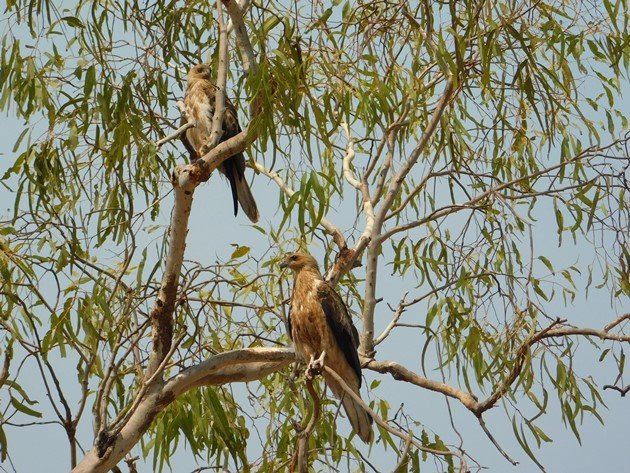
Whistling Kites
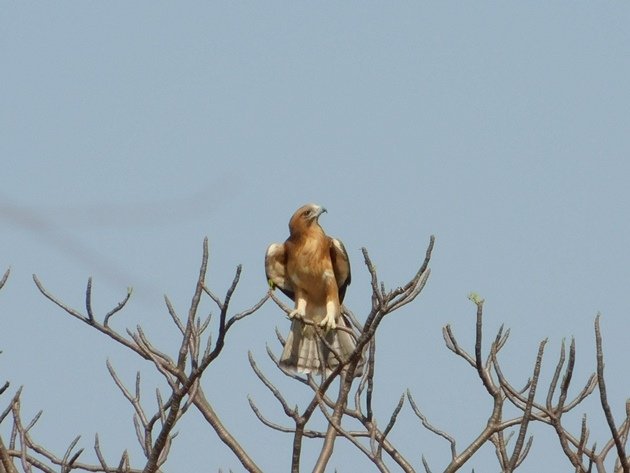
Little Eagle
If you are wondering about the whereabouts of the crocodiles in all of this then I can assure you they are still there. Before the rain when it was extremely hot they were in the water and not visible. Once the rain had gone and it was cool on the bank there were a few that got out to sunbathe. There are both freshwater crocodiles and saltwater crocodiles there and the numbers vary throughout the year.
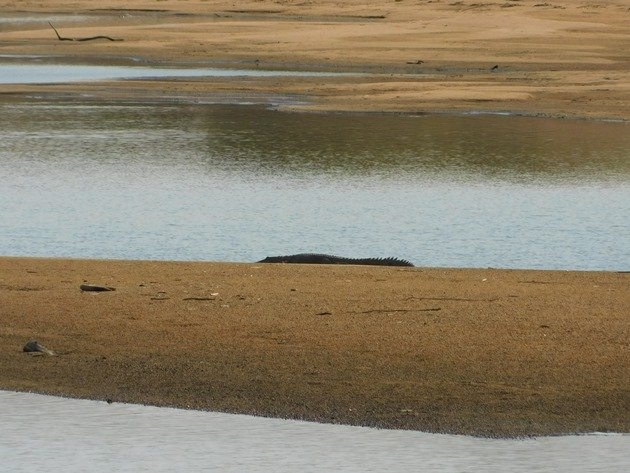
Crocodile
Other bird species that we observed included Mistletoebirds, Brush Cuckoo, Horsefield’s Bronze Cuckoo and the recently returned Dollarbirds. Our total bird list for the twenty two hours that we had spent there was seventy species and we had our first reminder of the wet season that will eventually come to Broome!











Leave a Comment